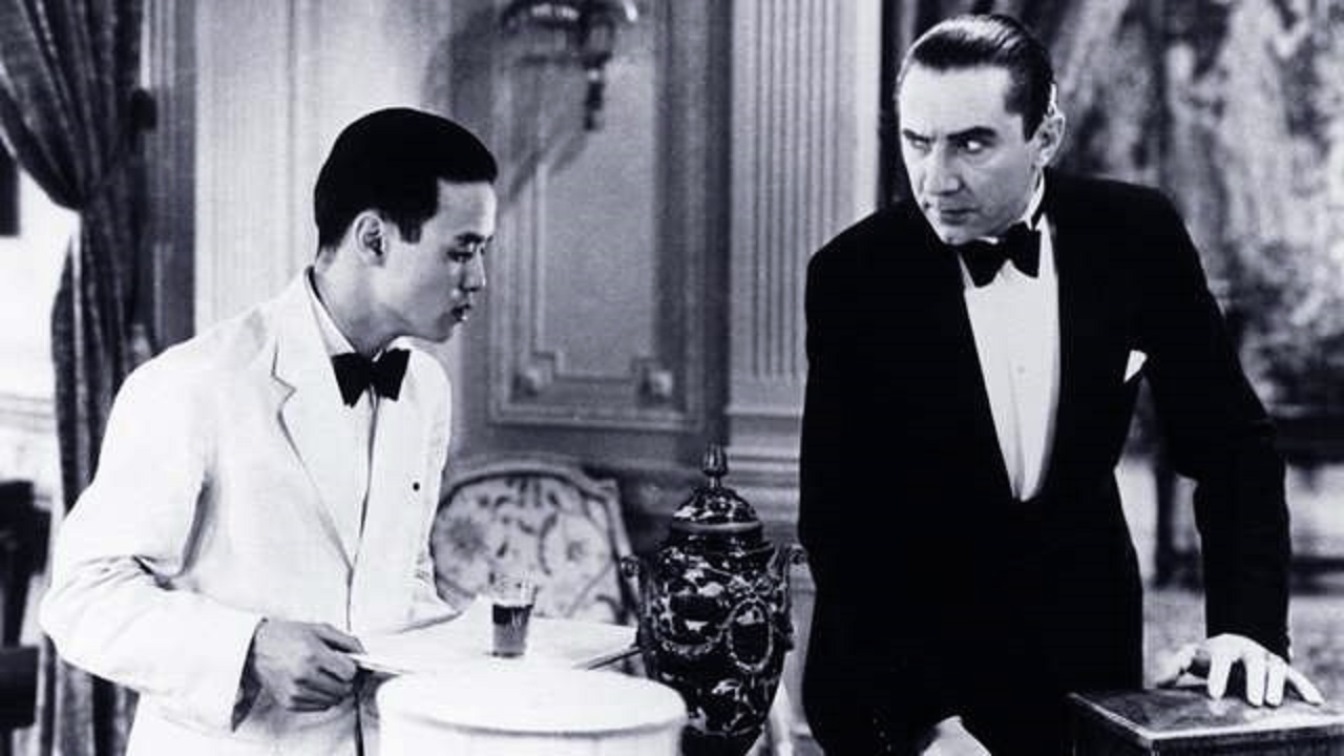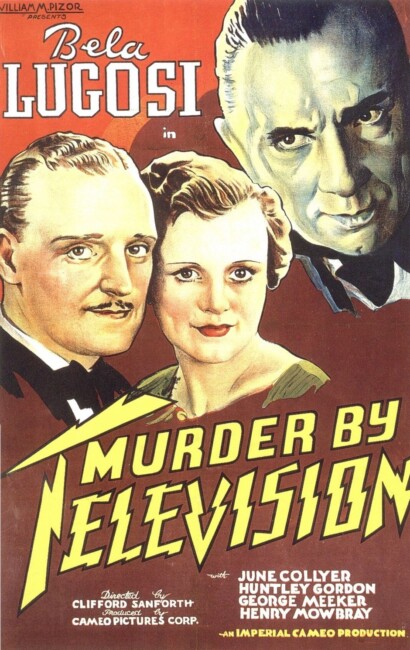Crew
Director – Clifford Sanforth, Screenplay – Joseph O’Donnell, From an Idea Suggested by Carl Coolidge & Clarence Hennecke, Photography (b&w) – James Brown Jr. & Arthur Reed, Art Direction – Louis Rachmil. Production Company – Cameo Pictures Corporation.
Cast
Bela Lugosi (Arthur Perry/Edwin Perry), Henry Mowbray (Chief of Police Nelson), June Collyer (June Houghland), Huntly Gordon (Dr Henry Scofield), George Meeker (Richard Grayson), Hattie McDaniel (Isabella), Allan Jung (Ah Ling), Charles Hill Mailes (Professor James Houghland), Claire McDowell (Mrs Houghland), Charles K. French (Donald M. Jordon), Larry Francis (Mendoza), Henry Hall (Hammond)
Plot
Professor James Houghland is about to premiere his invention of a television. Rivals seek to buy him out or stop the demonstration. The television is turned on in Houghland’s home before his family and invited guests. Houghland appears on the screen to introduce someone singing and sights broadcast live from around the world. Houghland then drops dead in the middle of the broadcast, having been murdered. Chief of Police Nelson then arrives at the Houghland home and tries to determine who among the people present is the killer.
Murder by Television is the oddity of a film that was science-fiction at the time it was made but no longer is today. It concerns the invention of a television. Certainly, this was a technology that was just around the corner in 1935 when the film was made. Scotsman John Logie Baird made the first broadcast in 1925, although this only consisted of the transmission of still images, Various others inventors and companies attempted to perfect devices throughout the 1930s. Some companies had been broadcasting early test signals and footage during the 1930s – certainly not with the detail and resolution that is depicted here – and regular programming was being offered by the end of the decade. However, proper commercial television as we know it today did not begin until around 1944 in the US.
This was one of several films around the same time that were fascinated by the possibilities presented by the new invention of television. The first film to do so was Elstree Calling (1930) and there were a number of others from the screwball comedy International House (1933) to the variety show The Big Broadcast of 1936 (1935) and the thriller Trapped by Television (1936).
Murder by Television is not that interesting a film. It is dull and static. It was made early into the sound era where audiences were fascinated with the novelty of seeing actors simply talking up on the big screen and so that is what they did endlessly for the next few years. Murder by Television could fairly much be a radio play but with the addition of moving images. There is also no score to accent the action. The camera rarely moves about within a scene (a problem of the early sound films due to the fact that the new sound equipment was too bulky and cumbersome to be moved). In fact, the film is so static and dull, we never even see how the murder of the professor actually occurred (although that could well be due to the then recent introduction of the Hays Code, which forbade the detailed depiction of murder).

The story is simply a chamber drama – a not terribly interesting murder mystery that never leaves the house for its runtime. The invention of a television is just a gimmick to hang the story on – once the murder mystery kicks in, the television is simply forgotten about. The actual demonstration of the television seems laughable today – the broadcast consists of a girl singing a song and then what we are told are scenes broadcast from all around the world, which are clearly no more than stock street scenes. It is hard to believe today that any of that would have been considered cutting edge technology but the film gives us society people dressed up and excitedly gathered around to watch the broadcast.
The major interest the film holds today is that it is one of the works of Bela Lugosi who had become a major Hollywood name only a few years earlier with Dracula (1931). The confusion you have watching the film and especially after seeing so many B movies Lugosi appeared in throughout the 1940s is that he is not the villain. He is not even the inventor of the television, although he does play the scientist’s assistant and what is later revealed is his twin brother (a plot device of stunning irrelevance). Seeing Lugosi in a normal role and playing it with his usual overwrought thick accent offsets an otherwise straightforward mystery drama – after having watched enough of his films, you keep expecting him to leer with maniacal glee.
As is often the case with films of this era, there is an undeniable racism when it comes to the portrayal of non-Caucasian characters – Hattie McDaniel’s African-American maid is all rolling eyes and “yassirs” and Allan Jung plays a Chinese manservant who speaks in a cliche singsong accent and spouts aphorisms of which is said at one point “Don’t mind Ah Ling – he has a habit of quoting Confucius.”
Full film available here


